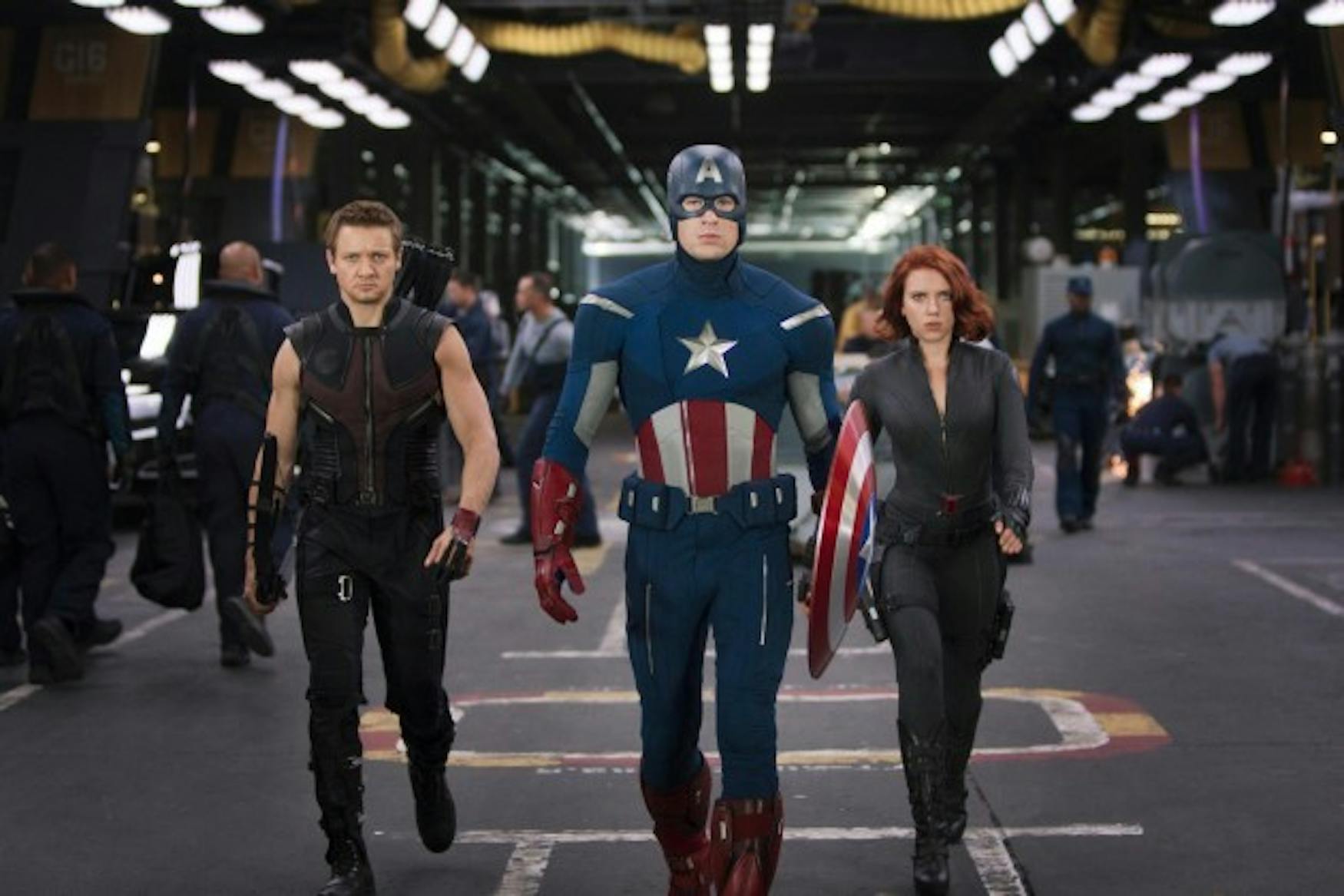Marvel's 'The Avengers' earns its acclaim
By now, The Avengers has already earned more than a billion dollars, sold a bunch of comic-book-themed merchandise to boot and pummeled Battleship and The Dictator so hard at the box office that Disney/Marvel might as well have been shouting "Hulk smash!" Distributor Walt Disney Pictures has wiped its hands of John Carter, the company's early-2012 bomb, Marvel Studios is scheming up a Spidey-Web flowchart of future tie-in sequels, and writer-director Joss Whedon (Buffy the Vampire Slayer, Firefly) is celebrating the long-deserved mainstream success that might make him the sci-fi/fantasy film director of the decade.
None of this could have happened without CGI. The Avengers brims with so many mutants, explosions and flying ships that its digital effects seem almost banal compared to what's not digitally produced-human interaction, love, faces-the "real" stuff that helps us care about the movie when we're not amazed by its effects. I call it the Avatar effect, although The Avengers has less computerized hocus-pocus and a more meaningful plot and dialogue than James Cameron's love letter to computer graphics.
There were high expectations. The build-up leading to this Justice League-style brouhaha consisted of Iron Man, Iron Man 2, The Incredible Hulk, Thor and Captain America-the clash of the comic book titans. Like last summer's Harry Potter and the Deathly Hallows: Part 2, The Avengers was a culmination of many things and many people, and it could not afford to fail. Instead, it soars. It gave me more than just the regular superhero-geek satisfaction. It was the warm feeling of good in the form of ass-kicking awesomeness triumphing over evil.
The premise of The Avengers is simple. It's a movie that brings together the various superheroes whose stories have been brought to the big screen by Marvel over the past years, the same way The Avengers comic book brought together all the Marvel superheroes in the 1960s. S.H.I.E.L.D., the most powerful covert peacekeeping organization on Earth, has employed a team of talented fighters to serve and protect the human race against villains. This was leader Nick Fury's (Samuel L. Jackson) dream until a blue glowing cube landed on Earth via a blue, glowing portal. All you need to know about the "Tesseract"-essentially a McGuffin that borrows its name from Madeleine L'Engle's A Wrinkle in Time-is that it's really important and everyone wants it.
The suspense comes from the clash between the good guys, while the sole villain, a wily magician named Loki (Tom Hiddleston), does what he can with his screen time. Whedon's genius lies in giving each male lead the time he needs as a full-fledged character without going over the three-hour mark. Each superhero's backstory is complex and important to the plot without punishing the viewer for not seeing the previous Marvel movies.
An example: "Volatile, self-obsessed, and doesn't play well with others" is the self-ascribed personality profile of Robert Downey Jr.'s Iron Man, a cynic with a suit of steel and a heart of gold (Or is that just a reactor core?). Iron Man, also known as the billionaire weapons inventor Tony Stark, cares more about buying the world than saving it, so his transformation from narcissist to hero is a joy to watch. If you remember the mediocre Iron Man 2, then you'll note that he's gone a long way from drunkenly urinating inside his suit.
Mark Ruffalo shines as Bruce Banner, the sensitive outcast scientist with a dark, green secret. He's better than Eric Bana and Edward Norton as the Hulk, and Marvel would do well to keep him on board for future Hulk films. And, like almost every male protagonist in the film, Banner has a bit of sexual tension with the Black Widow (Scarlett Johansson).
Johansson's Widow isn't merely a femme fatale but an emotional force in the film. She should have fallen for the burly Captain America (Chris Evans), but instead remains romantically attached to Hawkeye (Jeremy Renner)-the only character without a tie-in movie. Then there's Thor (Chris Hemsworth), the demigod from Norse mythology and Loki's older brother. He's pretty.
Canadian actress Colbie Smulders (How I Met Your Mother) landed a great role as Maria Hill, Fury's right- hand woman. Clark Gregg reprises his role as Agent Phil Coulson, Fury's right hand man. S.H.I.E.L.D. would have been a typical bore, however, if not for its impressive method of travel: an aircraft carrier that flies.
All that needs to be said about what actually happens: Loki obtains the Tesseract to create a portal with which to unleash aliens to take over the world, and the Avengers try to stop him via lots of epic battles. The action of the film must be lauded. Behind the computerized gloss of every scene is a creative imagination that redeems the superhero movie as a genre. This isn't the epic clutter of effects you find in Transformers, but well-choreographed flashes of the past and present. Loki, like all supervillains, is soundly defeated. But I'm grateful he was there to help spawn the sequels I'm already eager to watch. Stay until the end of the credits-the actual credits-and you'll see why the next Avengers film might be even bigger and better.
The author is a member of the Class of 2012 and a former editor of the Justice.



Please note All comments are eligible for publication in The Justice.